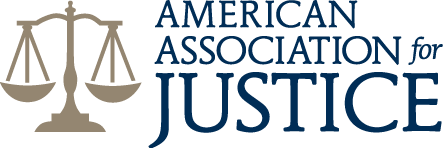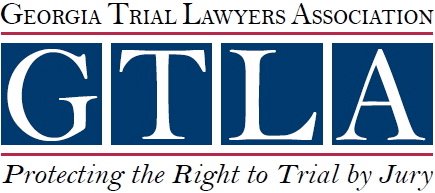In the state of Georgia, the legal landscape surrounding car accidents involving pedestrians in crosswalks is complex and nuanced. The laws are designed to ensure the safety of pedestrians, but they also impose significant responsibilities on both drivers and pedestrians. Understanding these laws is essential for anyone who finds themselves involved in such an incident, whether as a pedestrian or a driver. The intersection of these legal principles can be intricate, requiring careful consideration of the specific circumstances of each case.




The Duty of Care for Drivers
In Georgia, drivers have a fundamental duty of care to avoid accidents with pedestrians, especially in areas where pedestrians are most vulnerable, such as crosswalks. The state’s laws make it clear that drivers must exercise due caution and yield the right of way to pedestrians in marked crosswalks. This obligation is not merely a suggestion; it is a legal requirement that carries significant consequences if ignored. Drivers approaching a crosswalk must reduce their speed and be prepared to stop if a pedestrian is present. Failure to do so can result in severe penalties, including fines, points on the driver’s license, and even criminal charges in cases where the pedestrian is injured or killed.
The legal standard for drivers in these situations is one of “reasonable care.” This means that drivers must act as a reasonably prudent person would under similar circumstances. For example, if a driver sees a pedestrian approaching a crosswalk, they must slow down and prepare to stop, even if the pedestrian has not yet entered the crosswalk. The law does not allow drivers to assume that pedestrians will wait until it is safe to cross; instead, the burden is on the driver to ensure that they do not endanger the pedestrian.
However, the duty of care is not absolute. There are situations where a pedestrian’s actions may contribute to an accident, which can affect the legal outcome. For example, if a pedestrian suddenly steps into the path of an oncoming vehicle without giving the driver enough time to stop, the pedestrian may be found partially or wholly at fault for the accident. In such cases, Georgia’s comparative negligence laws come into play, reducing the pedestrian’s ability to recover damages based on their degree of fault.
Pedestrians’ Rights and Responsibilities
While drivers in Georgia are required to yield to pedestrians in crosswalks, pedestrians also have specific rights and responsibilities under the law. Pedestrians must exercise due care when crossing the street and must use designated crosswalks whenever available. Crossing the street outside of a crosswalk, or “jaywalking,” is not only illegal but also increases the risk of accidents. Pedestrians who are injured while jaywalking may find it more challenging to recover damages, as their violation of traffic laws can be seen as contributory negligence.
When a pedestrian is in a crosswalk, they have the right of way, and drivers must stop to allow them to cross safely. This right is not unlimited, however. Pedestrians cannot suddenly leave the curb and walk or run into the path of a vehicle that is so close it is impossible for the driver to stop. In such cases, the pedestrian may be found at fault for the accident, or at least partially responsible.
In addition to using crosswalks, pedestrians are expected to obey traffic signals and signs. For instance, if a crosswalk is controlled by a pedestrian signal, the pedestrian must wait for the “walk” signal before crossing. If the signal is red, indicating “don’t walk,” the pedestrian must remain on the curb. Ignoring these signals can lead to dangerous situations and may reduce the pedestrian’s ability to recover damages in the event of an accident.
The concept of comparative negligence is crucial in these cases. If a pedestrian is found to be partially at fault for an accident, their compensation may be reduced by the percentage of their fault. For example, if a pedestrian is found to be 30 percent responsible for an accident, their compensation will be reduced by 30 percent. If the pedestrian is found to be more than 50 percent at fault, they may be barred from recovering any damages at all.
The Role of Crosswalks in Accident Cases
Crosswalks play a central role in the legal analysis of car accidents involving pedestrians. In Georgia, crosswalks are designated areas where pedestrians have the right of way, and drivers are legally required to yield. However, the presence of a crosswalk does not automatically absolve pedestrians of responsibility. The law requires both drivers and pedestrians to exercise caution and to be aware of their surroundings.
The design and location of a crosswalk can also influence the outcome of an accident case. For example, a crosswalk located at a busy intersection with traffic signals will be treated differently than a crosswalk in a quiet residential area. The former may involve more complex considerations, such as the timing of traffic lights and the flow of vehicles, while the latter may focus more on the driver’s and pedestrian’s actions.
In cases where a crosswalk is not clearly marked, the law still protects pedestrians, but the analysis may be more complicated. Pedestrians crossing at unmarked locations must yield the right of way to vehicles, but drivers are still expected to exercise reasonable care. If an accident occurs in such a situation, the court will look at the specific facts to determine liability. Factors such as visibility, speed, and the actions of both the driver and pedestrian will be considered.
In some instances, the location of a crosswalk may be deemed unsafe, and this can play a role in legal proceedings. For example, if a crosswalk is located in an area with poor visibility or inadequate signage, the government entity responsible for maintaining the crosswalk may be held partially liable for an accident. This adds another layer of complexity to these cases, as multiple parties may be involved in determining liability.
Hiring a Personal Injury Attorney How Long Will a Personal Injury Case Take?Related Videos
Legal Consequences for Drivers and Pedestrians
The legal consequences of a car accident involving a pedestrian in a crosswalk can be severe for both drivers and pedestrians. For drivers, failing to yield to a pedestrian in a crosswalk can result in significant penalties, including fines, points on their driving record, and even criminal charges in cases of serious injury or death. These penalties can have long-lasting effects, including increased insurance premiums and potential loss of driving privileges.
In cases where a driver is found to be at fault, they may also be held liable for the pedestrian’s injuries. This can include compensation for medical expenses, lost wages, pain and suffering, and other damages. The amount of compensation will depend on the severity of the injuries and the circumstances of the accident. In cases of catastrophic injuries or wrongful death, the compensation can be substantial, potentially reaching into the millions of dollars.
For pedestrians, the consequences of an accident can be equally serious. If a pedestrian is found to be at fault, or partially at fault, for the accident, their ability to recover damages may be limited. In some cases, they may be barred from recovering any damages at all. This can leave the pedestrian responsible for their medical expenses, lost wages, and other costs associated with the accident.
In addition to the financial consequences, pedestrians who are involved in accidents may face legal penalties if they are found to have violated traffic laws. This can include fines for jaywalking or failing to obey traffic signals. While these penalties are typically less severe than those faced by drivers, they can still have a significant impact, especially if the pedestrian is already dealing with the physical and emotional aftermath of an accident.
Representative Cases
The Importance of Legal Representation
Given the complexities of Georgia’s laws on car accidents involving pedestrians in crosswalks, it is crucial for both drivers and pedestrians to seek legal representation if they are involved in such an incident. The legal principles involved in these cases can be intricate, and the stakes are often high, with significant financial and legal consequences on the line.
An attorney with experience in personal injury law can help navigate the legal process, gather evidence, and build a strong case on behalf of their client. This may involve working with accident reconstruction specialists, reviewing traffic camera footage, and consulting with medical professionals to fully understand the extent of the injuries involved. The goal is to ensure that their client receives the compensation they deserve and that their rights are fully protected throughout the legal process.
In addition to representing clients in court, an attorney can also assist with negotiating settlements with insurance companies. Insurance companies are often quick to offer low settlements in the hopes of resolving cases quickly and cheaply. However, these initial offers are often far below what the injured party is entitled to. An attorney can help ensure that any settlement reflects the true value of the case, including compensation for medical expenses, lost wages, pain and suffering, and other damages.
For drivers who are facing criminal charges as a result of an accident, legal representation is even more critical. A skilled attorney can help navigate the criminal justice system, defend against the charges, and work to minimize the potential consequences. This may involve negotiating plea deals, presenting evidence in court, and advocating for their client’s rights at every stage of the process.
Car accidents involving pedestrians in crosswalks in Georgia are governed by a complex set of laws that require careful consideration of the actions of both drivers and pedestrians. These laws are designed to protect pedestrians while also holding them accountable for their actions. The consequences of an accident can be severe for both parties, including significant financial liabilities, legal penalties, and long-term impacts on their lives.
Given the complexities involved, it is essential for anyone involved in such an accident to seek legal representation to ensure their rights are protected and that they receive the compensation they deserve. Princenthal, May & Wilson, LLC is committed to providing comprehensive legal support to those affected by these challenging cases. Their team is dedicated to helping clients navigate the legal process, advocating for their rights, and working tirelessly to achieve the best possible outcome. If you or a loved one has been involved in a car accident involving a pedestrian in a crosswalk, do not hesitate to reach out to Princenthal, May & Wilson, LLC for the assistance you need.





